25.07.2023.
Town square and its magic
Surrounded by numerous landmarks, this town square has been the main place of gathering throughout history.
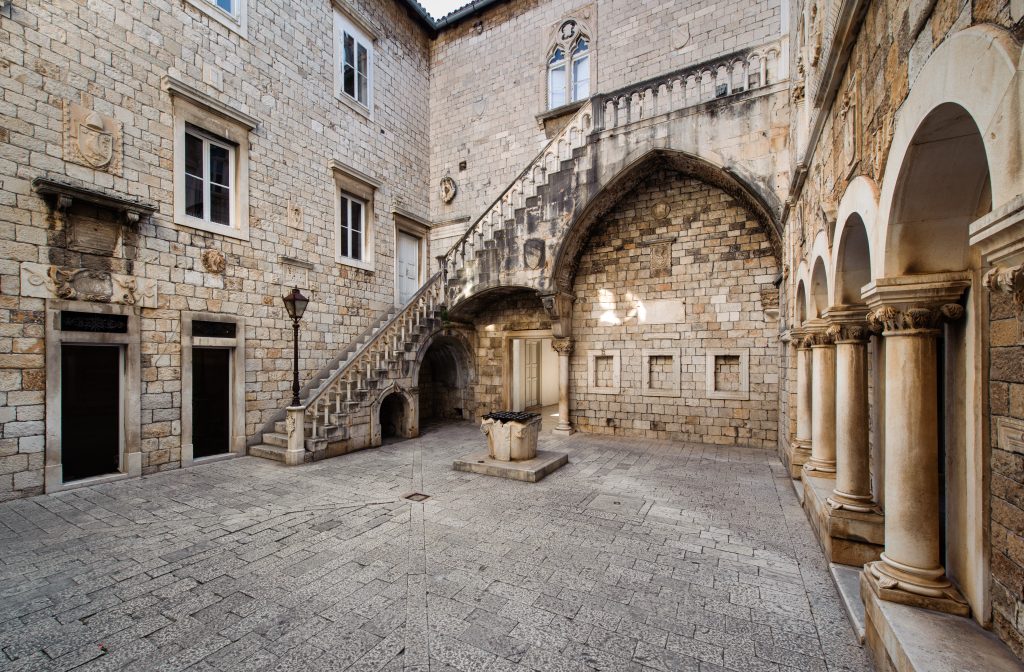
The Rector’s Palace is located in the eastern part of the main square. Its construction began in the XIII. century, where the church of St. Stjepan once stood. The openings of the palace overlooking the square are Renaissance in shape, with numerous motifs and decorations that are suspected to have been designed by Nikola Firentinac. In the inner courtyard we can find a Gothic style staircase that was assigned to the builder Matija Gojković. At the very top of the Gothic staircase is the inscription AULA CONSILII NOBILIUM, which mentions the town hall where only nobles had access until the year 1848. Some of the windows in the courtyard have been preserved in their original form, while others were brought from other buildings or are even reconstructions. The center of the palace is decorated with the original crown of the well, on which are the winged lion of (St. Mark) together with the seal of the Venetian state. The palace as we see it today was designed in 1890, when the last reconstructions were completed.
The inner courtyard hosts numerous concerts of classical music as well as plays.
The southern part of the main town square is occupied by the church of St. Sebastiana, better known as the city clock tower.
Located between the church of St. Mary (sacred art museum) and the city loggia, St. Sebastian began to be built in the year 1477, as a vow of salvation from the plague. Above the door is the statue of St. Sebastian, right above it is a figure of Christ in a blessing pose. The interior space is dedicated to Sebastian (the saint of soldiers), inside we can also find a memorial plaque to those who died in the fight for the independence of Croatia.
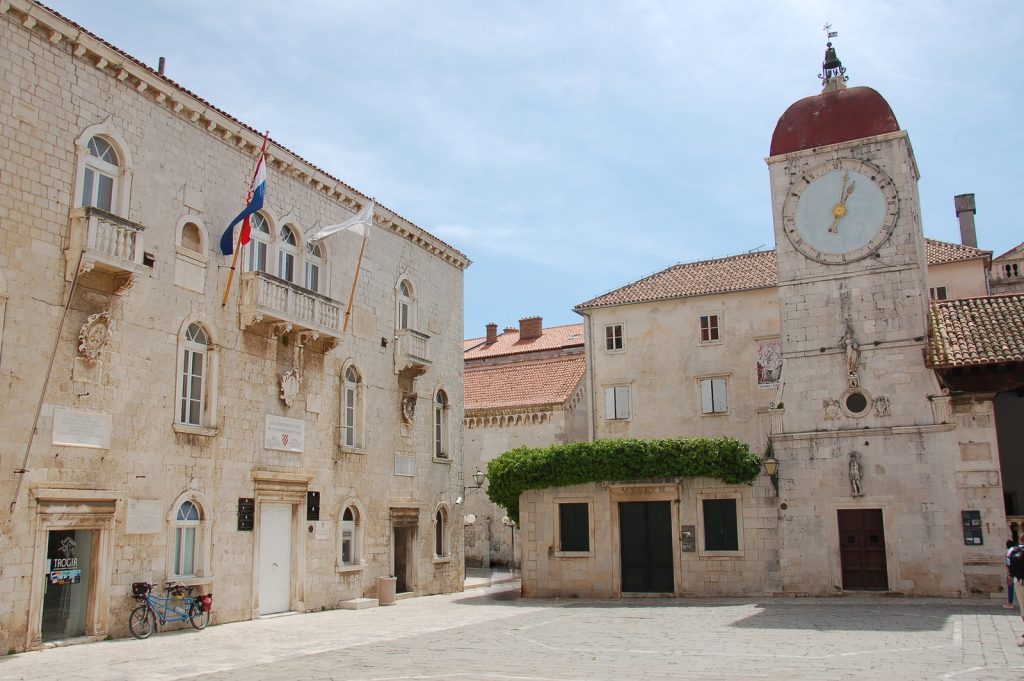
Church of St. Mary is located on the left side of the city clock, and it used to be a closing corner southeast of the city square.
Built in the 9th century during the early Middle Ages, the church was a six-leaf building with a dome in the center. Today we can see only the remains of the former church, and in its place now stands the museum of sacred art. The museum is open to all visitors, and within the space you can see numerous religious works of art that were created from the 13th till the 16th century, partly taken from the cathedral and partly from other churches in Trogir.
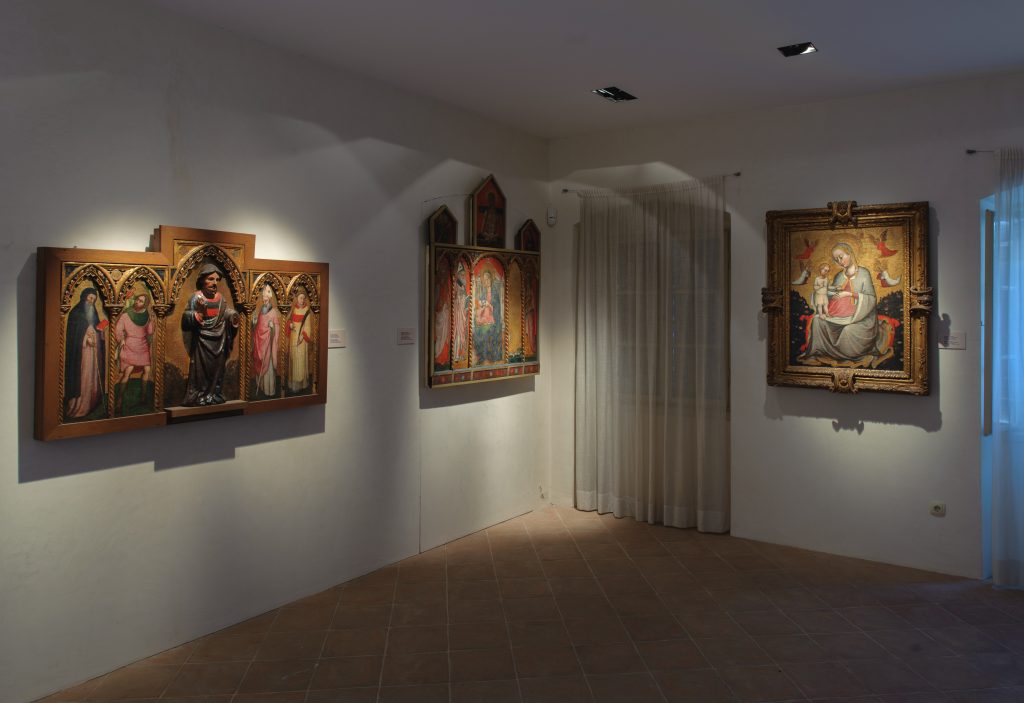
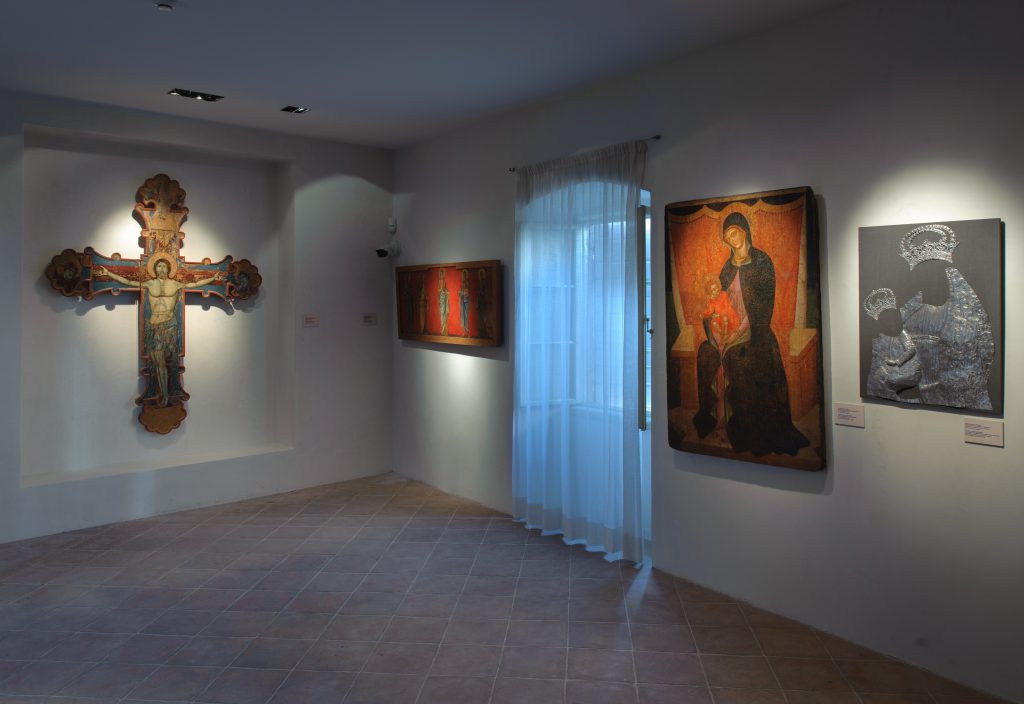
The town loggia was first mentioned at the beginning of the 14th century, and its present form takes on the seventies of the XV. century with the work of Nikola Firentinac.
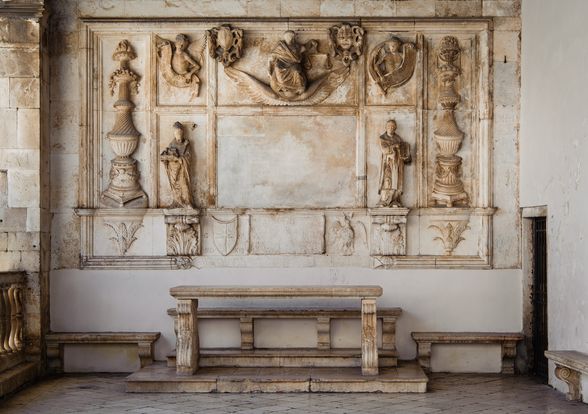
The columns on the loggia were partly brought from the ancient ruins. The loggia served as a courtroom in the past, and its judge’s desk is still located there. Above the table, we see various Renaissance sculptures, Latin inscriptions about justice and coats of arms. In the past, the central part depicted a winged lion (St. Mark) holding an inscription in Latin. The lodge itself was made as a real Renaissance temple of justice. The southern wall shows a relief of Petar Berislavić, a famous Croatian ban who opposed the Venetians and the Turks. The relief is the work of Ivan Meštrović.
Related blogs
18.09.2024.
St. Martha – Bijaći
The Church of St. Martha in Bijaći, located on the western edge of the Kaštela Plain at the Stombrate site, is among the most important national archaeological sites. The church and the archaeological remains surrounding it form a complex which dates back to the 1st century when a group of agricultural buildings from a larger […]
29.08.2023.
History of Trogir
Trogir is known for its rich history, and when you find yourself in the old town, time seems to stand still. Despite the fact that Trogir is thought to be much older, the findings show us that the city was founded at the end of 3rd century BC or at the beginning of 2nd century […]
16.08.2023.
Trogir associations
Trogir associations have been maintaining the city’s culture for years with their dance and musical acts. Their performances attract fans from all over the world. Cultural and artistic society- Kvadrilja In 1969, the KUD association “Kvadrillja” was established. First operating as the folklore division of the Čiovo Youth Association, the society later obtained its official […]